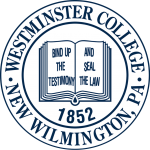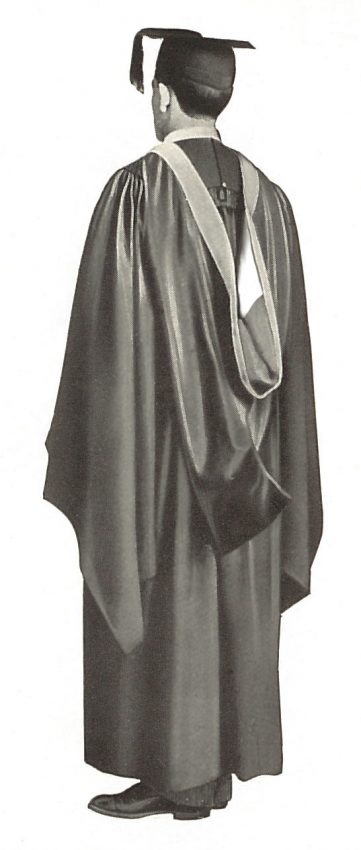Westminster College
Pennsylvania
1852



To avoid assigning duplicate hood linings to colleges and universities that used the same school colors, the Intercollegiate Bureau of Academic Costume (IBAC) used different types of heraldic patterns to divide the two or more colors in an academic hood. In IBAC lists from 1927 and 1948, a number of hood lining patterns were described as “[color] above [color]” or “[color] over [color]”, which referred either to a hood lining divided per chevron, per reversed chevron, or per bar. Unfortunately, today it is not usually known which of these three patterns the Bureau intended to describe.
Initially, the IBAC assigned Westminster College a hood lining that was “white above Yale blue”, according to an IBAC list from 1927. But since Yale blue is a darker blue than Westminster’s “true blue”, the Bureau modified Westminster’s hood lining colors to more closely match the actual colors of the college: “white over blue”, a description that appeared in IBAC lists from 1948 and 1972. The heraldic division between the two colors was not defined in these Intercollegiate Bureau lists, but fortunately a list compiled by Kevin Sheard in Academic Heraldry in America (1962) clarified Westminster’s hood lining as being white above blue, divided per chevron.


In 1902 “true blue” was chosen by the students at Westminster College to replace their school colors of scarlet and gold. Before that, the earliest colors for the college had been pink and blue. According to the text of the student resolution, “true blue” had been selected because Westminster was a college affiliated with the Presbyterian Church, and “true blue” was the “time-honored color of Presbyterianism”. Within a decade, white had been added as a second college color. In mid-1930s editions of the World Almanac, the shade of blue was described as “king’s blue”.
Citations in the World Almanac (listed by cover date; color information is from the previous year): blue/white (1917-1933); king’s blue/white (1934-1935)
